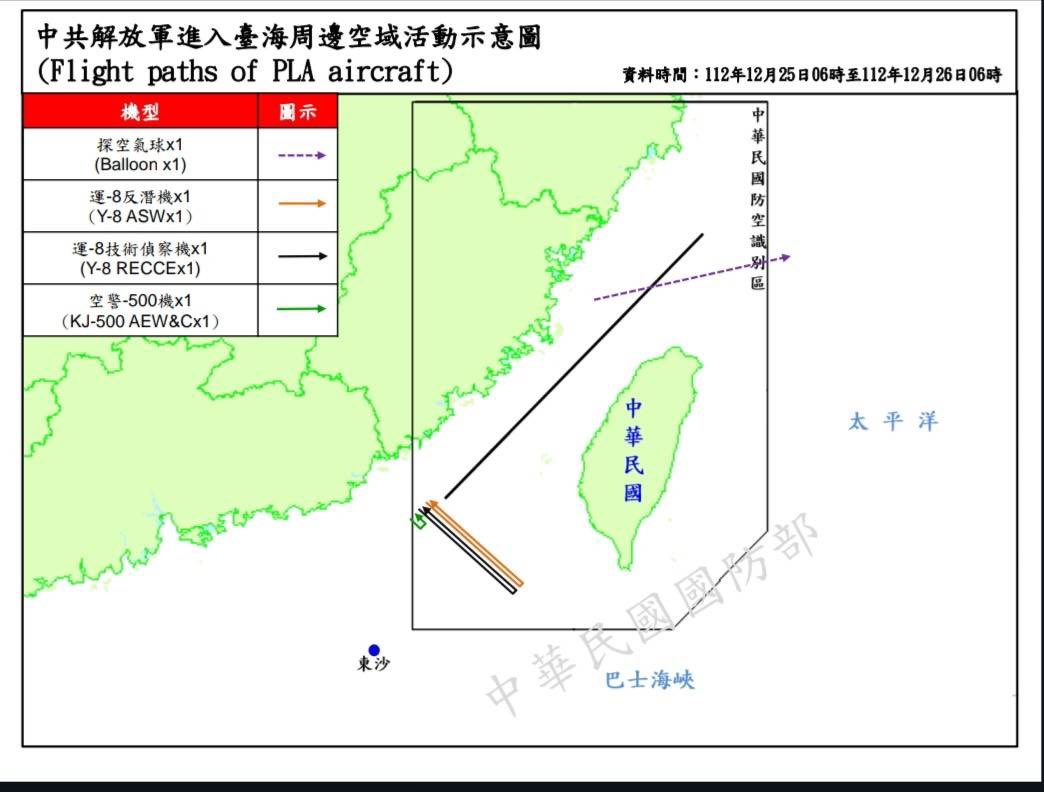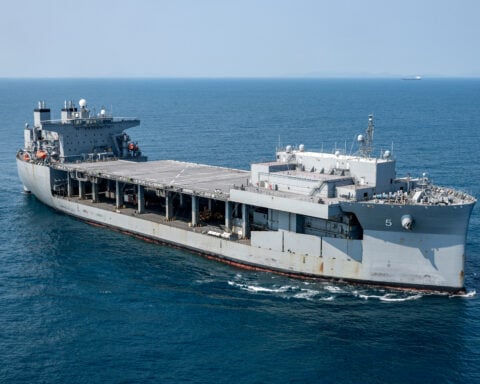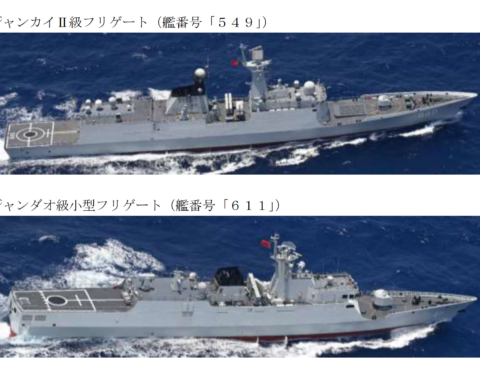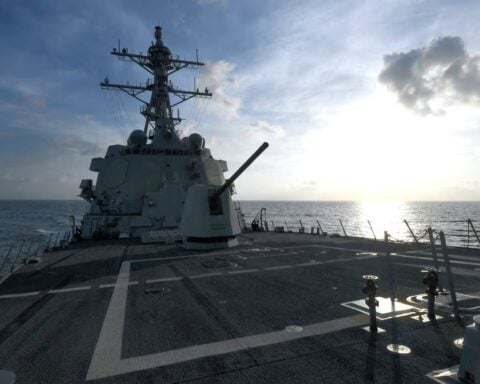
China’s President Xi Jinping appointed a new Chief for the People’s Liberation Army Navy in a Monday ceremony in Beijing while the post of China’s top defense minister remains vacant. Meanwhile Taiwan continues to report Chinese balloons crossing the median line of the Taiwan Strait though Taiwanese officials have played down the sightings.
On Monday morning, President Xi Jinping held a promotion ceremony in the Bayi Building where two officers were promoted to four-star rank – Adm. Hu Zhongming and Gen. Wang Wenquan. ThePLA Daily reported on the ceremony say Hu as commander of the Navy and Wang as political commissar of the Southern Theatre Command.
Hu was previously the PLAN Chief of Staff and is a submarine officer though details of his career are sparse, a Chinese media report in 2015 stated that Hu had a served in the PLA 92730 unit, which operates China’s nuclear submarine. Hu, then a submarine commanding officer in 2008, was ranked first on the Chinese military’s list of top performers, according to Chinese state media. Among Hu’s other appointments included December 2019 to December 2021 as commander of Northern Theater Command Navy and deputy commander of the Northern Theater Command.
Hu replaced Adm. Dong Jun, who took command of the PLAN on Sept.6 2021. Chinese media reported that that Dong was present during Monday’s ceremony though no statement has been made as to his next appointment.
The post of China’s Minister of National Defense continues to remain vacant since General Li Shangfu was removed from the position in late October and expelled at the same time from the CMC. However, the China Ministry of National Defense website continues to list Li as a member of the CMC. The Chinese government has not issued any further statements since the announcement of Li’s removal and expulsion from the CMC nor the cause for the action.
Hu’s appointment comes at a time when China continues its ongoing sea and air presence around Taiwan though the number of aircraft detected by Taiwan have been in the range of 10 to 30 aircraft daily over the month in contrast to September’s large surge of 103 aircraft while the number of PLAN ships detected over the month has been less than a dozen ships daily.
Taiwan though has seen an uptick in detections of Chinese balloons crossing the median line of the Taiwan Strait from mid-December though the Taiwan Ministry of National Defense (MND) has played down the detection of the balloons as the nation prepares to conduct a presidential and parliamentary election on Jan. 13. Reuters reported on Dec.20 that MND spokesperson Maj. Gen. Sun Li Fang said the Chinese balloons are more regularly spotted from October to March due to the winds at that time of year.
“Generally speaking most of the ones we have spotted so far are weather balloons,” said Sun in the report, “They are from mainland China, and not necessarily from the People’s Liberation Army”. He added that the MND will handle the balloons based on the threat assessment level though what would be carried out if so was secret. Sun repeated the statement of the nature of the balloons on Monday and said they were unrelated to Taiwan’s election according to Taiwan’s TVBS News Channel which also reported that Sun emphasized that any misleading Chinese activities will be made public by the MND to uphold citizen morale.

On Tuesday, the MND reported that from a 24-hour period ranging from 6 a.m. Monday to 6 a.m. Tuesday, eight Chinese military aircraft and five PLAN ships were detected around Taiwan and 3 of the Chinese aircraft entered Taiwan’s southwest Air Defence Identification Zone (ADIZ). The three aircraft were a Y-8 Maritime Patrol Aircraft (MPA), a Y-8 reconnaissance aircraft and a KJ-500 Airborne Early Warning and Control aircraft (AEWC). The MND also reported on Monday that a Chinese balloon crossed the median line of the Taiwan Strait in a location 66 nautical miles northwest of Keelung, Taiwan and at an altitude of approximately 26,000 feet. The balloon headed east and disappeared at 12:27 a.m. on Tuesday.
Chinese balloons over the U.S and Japan have been suspected to being employed for surveillance missions with the U.S. shooting several down earlier this year. Taiwan’s MND had earlier reported several sightings over the past two weeks. On Dec.17, two Chinese balloons were detected after crossing the median line at a location 110nm northwest of Keelung at an altitude of approximately 27,000 feet. The balloons headed east and disappeared at 9:36 a.m. and 4:35 p.m respectively. The following day, Dec.18, a single Chinese balloon was detected crossing the median line at a location 67nm northwest of Keelung at an altitude of 15,000 feet. The balloon headed east and disappeared at 11.52 a.m.. A single Chinese balloon was again detected on Dec.19 across the median line at 63nm northwest of Keelung with an altitude of approximately 12,000 feet. The balloon headed east and disappeared at 2.05 a.m, on Dec.20. On Saturday, a single Chinese balloon was detected at 10.20 a.m. after crossing the median line of the Taiwan Strait in a location 97nm northwest of Keelung with an altitude of approximately 20,000 feet. The balloon headed east and disappeared at 11:35 a.m. that day.





